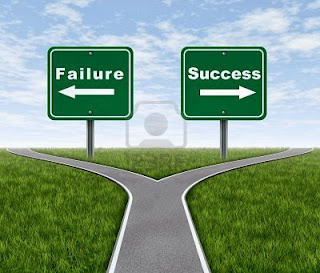 The organizational success or failure is hardly a one man game. The days of a single great decision maker at the top have shifted to strong decision making skills at all levels and across groups. No organization succeeds or fails based on the responsibility of only one individual. Yes, the leader holds the power to make the decisions and has the ultimate (not sole) responsibility. But a leader can only be held responsible within a reason for that which was in his/hers control.
The organizational success or failure is hardly a one man game. The days of a single great decision maker at the top have shifted to strong decision making skills at all levels and across groups. No organization succeeds or fails based on the responsibility of only one individual. Yes, the leader holds the power to make the decisions and has the ultimate (not sole) responsibility. But a leader can only be held responsible within a reason for that which was in his/hers control.We know today, supported by research, that the capacity to exercise control does enhance results. Also well explored is the fact that a company's culture is pushed down from the top. Companies that have failed, such as ENRON, have had management that abused the trusted power. The employees simply did what they were told to do. This proves to be a rigid culture lacking of transparency game. Another example of a rigid culture and leadership vision deficiency can be perceived in Kodak’s case where leadership somehow didn’t notice the shift coming in the technology related to films used for photographs.
Still, many companies that failed were led by professional, creative and well-skilled people, who just made mistakes or misread market signals just to find their companies in an untenable situation. Let’s try to outline ‘success’ or ‘failure’ on a real example of General Motors. The bailout of GM was the results of many decades of willfully neglecting the good business practices by the management of the auto industry. This was definitively a management failure that induced (wrong) business decisions which resulted in the lack of innovation and inability to compete with foreign automobiles. But today the company is still producing - making cars. To solve millions of jobs GM needed outside money and got it. This now may sound like a successful management. Nevertheless, no matter the actual cause of the failure or success, it pertains to the top management.
Another analogy that depends on constantly changing living environment is in martial arts. Responsiveness and adjustment are the usual solutions within martial arts. If a martial artist does not adapt and respond correspondingly he or she is out of the “game”. The same is true for a business. It has to keep up with the changing environment. The organization and the leaders are to adapt and see opportunities in changes. It is due to the vision of a leader in a transparent environment where also criticism from his/hers crewmembers are accepted to achieve the organizational goal. To be so a leader has to be very effective in communication and of course be surrounded by proper people.
A true leader understands well that failure is not necessarily the end of the road; it can be just a step on the road for the upcoming success. We could embrace this in “the responsibility”, but unfortunately it is quite rare to do so in these days! So, success or failure falls on the decision making culture of an organization, where the leader has the biggest impact on it. “Heavy is the head that wears the crown...!” were Shakespeare’s words on taking responsibility for a failure or a success.


Enthralling stuff I haven't been finished particular data in a lasting time.
ReplyDeleteGo to 908 Grinell Dr
happy to hear this Grinell
DeleteKeith Devis said that leadership is the process of encouraging and helping others to work enthusiastically toward objectives.
ReplyDeleteAccording to Koontz and Donnell the act of leadership is the process of influencing people so that they will strive willingly and enthusiastically toward the achievement of group goal.
Well according to Keith Davis ENRON had than "good" leaders?
ReplyDeleteOrganization success is lot more depend on how they develop them in terms of expansion , employee training
ReplyDeleteinnovationinnovation and Organization development
.The most important is leaders who are leading the organization know more about organization development